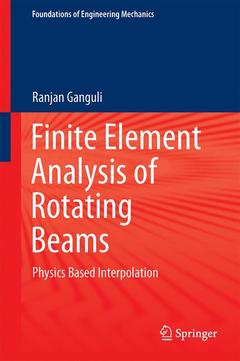Finite Element Analysis of Rotating Beams, Softcover reprint of the original 1st ed. 2017 Physics Based Interpolation Foundations of Engineering Mechanics Series

Introduction.- Stiff String Basis Functions.- Rational Interpolation Functions.- Fourier-p Superelement.- Physics Based Basis Functions.- Collocation Approach.- Rotor Blade Finite Element.- Spectral Finite Element Method.- Violin String Shape Functions.- Appendix A: Stiffness Matrix.- Appendix B: MATLAB Code.- Appendix C: Governing Equation for Rotating Timoshenko Beam.
Includes solved examples of the calculation of natural frequencies of rotating beams
Provides new methods for creating interpolation functions for the rotating beam finite element method
Includes Matlab code for finding the frequencies of a rotating beam
Covers new interpolation functions for low-order models useful in control problems
Shows how finite element methods can be improved by selecting interpolation functions
Includes supplementary material: sn.pub/extras
Date de parution : 08-2016
Ouvrage de 283 p.
15.5x23.5 cm
Date de parution : 06-2018
Ouvrage de 283 p.
15.5x23.5 cm



